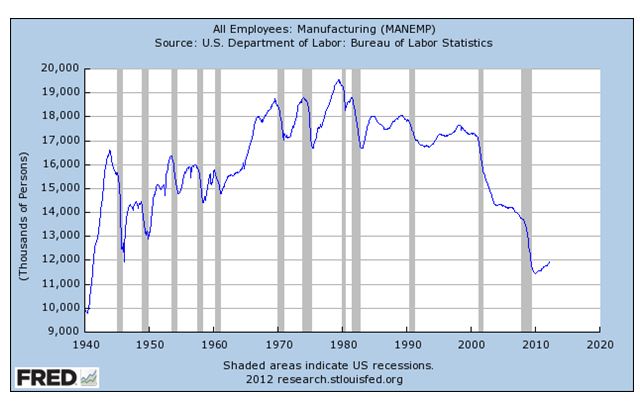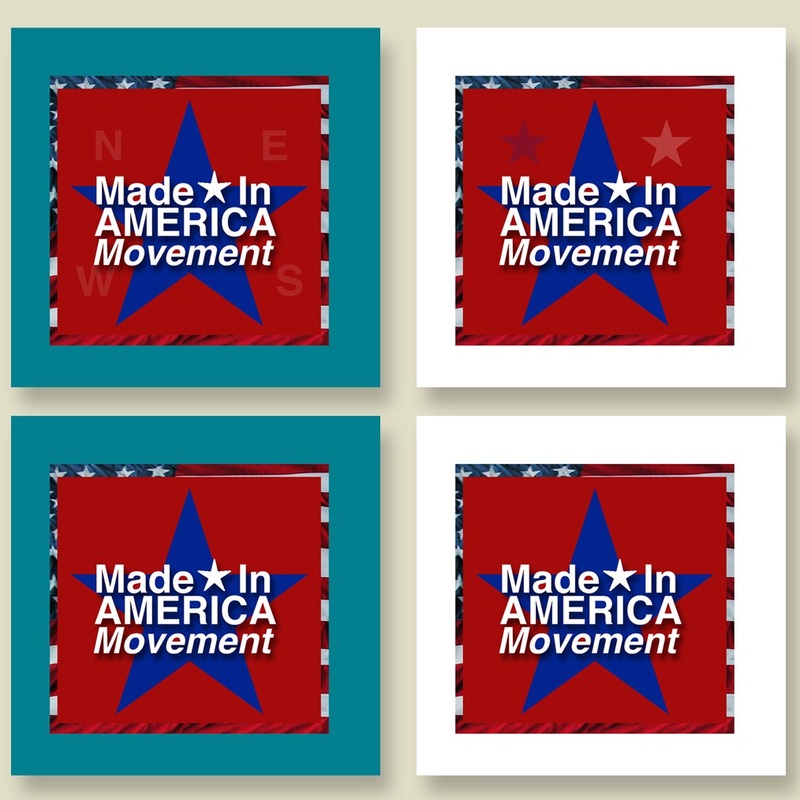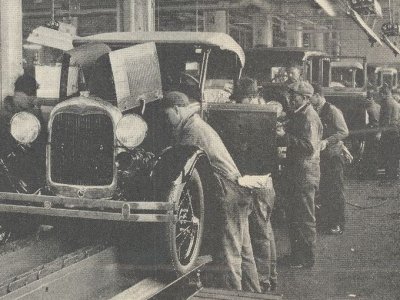
HARRISBURG, Pa., April 12, 2012 /PRNewswire via COMTEX/
“The Certech Facility in Wilkes-Barre has one of the most efficient and experienced teams in North America,” said Mike Kuzdzal, vice president and general manager of Certech North America. “As we continue to look for opportunities to improve our customer service levels and offer the best technical and most competitive products to the marketplace, it was a logical decision for us to move work into and create jobs for this site. The Pennsylvania government agencies we worked with to make this happen were extremely helpful and also focused on the growth of this facility.”
The project was coordinated by the Governor’s Action Team, a group of economic development professionals who work directly with businesses that are considering locating or expanding in Pennsylvania. The Governor’s Action Team worked with the Greater Wilkes-Barre Chamber of Business and Industry to assist Certech’s efforts to expand.
“We are thrilled by Certech’s decision to expand its Hanover Industrial Estates manufacturing facility,” said Larry Newman, vice president of the Greater Wilkes-Barre Chamber of Business & Industry. “It is very good news, not just because this project brings so many new quality jobs to the Wilkes-Barre area, but also because of what Certech’s investment says about Pennsylvania’s ongoing competitiveness as a manufacturing location.”
Certech Inc., a wholly owned division of Morgan Technical Ceramics and the Morgan Crucible Company, manufactures a broad line of complex injection-molded ceramic components. The components are used during the investment casting of turbine engine blades and vanes for aircraft and power generation, aircraft hardware, pumps, valves and sporting goods.
For more information on Certech Inc., visit www.mtccertech.com .
For more information on the Governor’s Action Team and other economic development initiatives in Pennsylvania, visit www.newPA.com or call 1-866-466-3972.
Media contacts: Kelli Roberts, Governor’s Office; 717-783-1116Steven Kratz, DCED; 717-783-1132
SOURCE Pennsylvania Office of the Governor
4/11/2012 | Written By Anthony Mirhaydari, MSN Money
Clearly, something’s still wrong with the economy. By the metrics that matter to most people, the Great Recession has not ended. Employment, retail sales, industrial production, home prices, most of the stock market and real incomes are all below their 2007 peaks. Food stamp usage is at a record high and rising.
But something’s going right, too. And I want to focus on that this week.
American competitiveness is back, albeit largely because of the pain we’ve endured. Our dollars are worth less, and real wages are lower. Corporations are responding, with new factories springing up and manufacturing jobs blooming like flowers welcoming the spring. Overall, the U.S. has added nearly 500,000 manufacturing jobs since the beginning of 2010 — the first period of significant growth since the late 1990s.
Experts say these trends are likely to continue.
Bank of America Merrill Lynch researcher John Inch wrote in a recent note to clients that the “U.S. economy is in the early stages of a long-term manufacturing renaissance.” Analysts at the Boston Consulting Group add that rising wages and other forces have steadily eroded China’s “once-overwhelming cost advantage as an export platform for North America.”
Thanks to higher U.S. worker productivity, as well as supply chain, cheap energy (natural gas) and logistical advantages, the BCG team says that by around 2015 “it may start to be more economical to manufacture many good in the U.S.”
In short, we could be on the cusp of revival of “Made in America,” with workers paid good wages for building things again. And for the millions in the army of the unemployed, it can’t come soon enough.
Silver lining to storm clouds?Don’t get me wrong. Our problems still run deep, and I’m not saying happy days are here again; I’m merely pointing out one of the few silver linings to be found.
We’ve long been too reliant on credit to supplement stagnant wages — and that’s left the West with an $8 trillion debt hole, according to Credit Suisse calculations. This fueled two bubbles and a financial crisis, and it resulted in the pitiful “recovery” we’re in now.
And so far, if the economy is reviving, most workers aren’t sharing in it. Real, inflation-adjusted wages have fallen in three of the past four months. This has never happened outside recession before. So it’s very possible we’re following Europe into the depths of a new downturn.
Last September, I argued that “the real recession never ended” and that, in reality, it started a decade or more ago as labor participation peaked in the late 1990s. We’ve been sliding lower ever since, trying to compensate for a lack of high-quality jobs and stagnant pay, with voodoo stimulus efforts out of Washington and an extreme, inflation-igniting easy-money policy from the Federal Reserve.
The core problem has been a hollowing-out of America’s manufacturing base because of increased globalization, the manipulative trade policies of China and others, and rapid technological change.
Washington, of course, hasn’t done anything about trade or jobs (except talk, of course). But the U.S. economy may find a way out of the hole anyway.
The depth of the problemBefore moving on, it’s worth remembering that something similar has happened before.
In many respects, the current situation resembles the Gilded Age of the late 1800s and the Long Depression, a global downturn that lasted from the 1870s through the 1890s. Replace the robber barons with hedge-fund managers and multinational CEOs, and the agitation over the Free Silver Movement with the Tea Party and the debate over the Federal Reserve’s stimulus efforts, and the similarities are striking.
The downturn was preceded by a period of global economic integration as steam power, the telegraph and railroads made the world smaller. Workers lost jobs to technology and foreign competition. The banking system was rocked by the panics of 1873, 1884 and 1893, driven by real-estate bubbles and stock speculation.
Our current role was played by the United Kingdom, an aging sovereign struggling to maintain its role as the world’s superpower. The role of the upstart United States is now played by vigorous up-and-comers like China and India. Check out this excerpt from A.E. Musson’s “The Great Depression in Britain, 1873-1896: A Reappraisal“:
“Britain was losing her technological lead; she was failing to modernize her plant, to develop new processes, or to modify her industrial structure with the same rapidity as Germany and the United States — owing to conservatism, the heavy cost of replacing old plant, and deficiencies in technical education.”
In other words, the British got lazy, making them vulnerable. We have the same problem now, and I outlined in “Are American workers getting lazy?”
The other part of today’s problem is that America’s free-trade policies put U.S. workers at a disadvantage, because trade partners aren’t playing fair. Beijing actively manages its currency’s exchange rate — accumulating trillions of dollars in reserves in the process — in an effort to ensure the country’s export-oriented growth isn’t threatened.
In this environment, research by the National Bureau of Economic Research shows that our economy will suffer if we don’t erect defensive trade barriers and tariffs.
Musson wrote that there was little doubt that a stagnation of British exports was “one of the most critical aspects” of the downturn and that aggression by trade partners was a primary cause. It’s the same for the United States today.
He writes: “Foreign trusts also adopted a vigorous policy of ‘pushing’ their goods abroad . . . while foreign industry and trade were greatly assisted by protective tariffs, export bounties, ‘drawbacks,’ and special low rates of rail transport. British business, on the other hand, had no such fiscal protection and assistance in this Free Trade era.”The result was a rise in calls for reciprocity and “fair trade.” It was argued that for Britain, as for the United States now, it would be ruinous to remain an open market when competitors were strongly protectionist. The result was a swing toward protectionism. Nothing much has been done on this front yet, but both presumptive GOP presidential candidate Mitt Romney and President Barack Obama have criticized China’s trade policies.
The tide is turningUnless the people rise up and demand change, I don’t believe the White House and Congress will do anything about our trade policies. Free trade and labor arbitrage have been very good for big business, pushing corporate profits
to record highs while average Americans struggle to fill their cars with gasoline.
Well-paid lobbyists will ensure that any anti-trade, anti-China legislation is dead on arrival to Congress. (Romney has promised to label China a currency manipulator, setting the stage for countervailing duties on Chinese goods. But legislation to do the same thing, which passed the Democratic-controlled Senate, has stalled in the Republican-controlled House.)
Fortunately, years of pain for American workers are bringing about a respite despite Washington’s recalcitrance.
The wage differentialConsider this: Back in 2000, in the twilight of the tech boom, factory wages in China averaged just 52 cents an hour — a mere 3% of what the average U.S. factory worker earned. In the years since, Chinese wages and benefits have jumped by double digits annually, with an average increase of 19% from 2005 to 2010.
With China’s workforce now peaking and labor shortages already developing in some of the coastal provinces, labor disputes and strikes — like the kind seen recently at factories supplying products as varied as flat-panel displays, auto parts and women’s lingerie — will surely become more common.
Beijing, mindful of the need to reorient China’s economy toward domestic consumption in the interests of sustainable growth, is becoming increasingly supportive of worker rights. Witness the recent regulatory spat over working conditions at Foxconn, the main supplier for Apple. Because of this, BCG anticipates further wage increases of 18% per year through 2015. By then, average pay in the Yangtze River Delta, the beating heart of China’s high-tech export machine, is expected to reach $6.31 per hour.
Here at home, fully loaded costs of U.S. production rose by less than 4% annually from 2005 to 2010 as labor unions became more flexible. Factoring in higher U.S. labor productivity, those Yangtze River Delta wages are likely to exceed 60% of U.S. manufacturing labor costs. After also factoring in favorable tax treatments for new factories, especially in Southern, nonunion U.S. states, the gap will be even smaller.
Plus, one must consider shipping expense, added wait times, and the plethora of hidden risks and costs of operating an extended global supply gain. China’s cost advantage won’t add up anymore.
Nor are other low-cost places like Vietnam and Indonesia suitable replacements, since they lack the infrastructure, talent, supply networks and productivity that have made China so attractive. For many, returning to the land of Stars and Stripes will be the best choice.
The impact on the economy will be “significant,” according to the BCG team. It identified seven industry groups — responsible for $200 billion in imports from China annually — for which rising costs in China will likely prompt the return of “Made in USA.” Examples include furniture, appliances, fabricated metals, machinery, transportation equipment, and plastics and rubber goods. Production of other items, such as apparel, textiles, footwear and computers, is expected to remain offshore.
What will this mean? Take a look at the chart below, showing an uptick in manufacturing jobs after a long decline.
Examples abound, though many of the companies are relatively small.
ET Water Systems, which had made irrigation controls in Dalian, China since 2002, has moved production and assembly to San Jose, Calif. High-end cookware maker All-Clad Metalcrafters is bringing lid production back to the U.S. from China. AmFor Electronics now enjoys lower delivery times and ease of design change after relocating wire-harness production from China and Mexico to Portland, Ore.
While we have a long road to travel to get back to where we were, at least we’re moving in the right direction. Things could be accelerated by focusing on America’s dilapidated infrastructure, encouraging domestic investment in new productive capital with permanent tax credits, reforming health care and education to increase productivity and lower benefit costs, and fingering China for what it is: a blatant mercantilist.
At the time of publication, Anthony Mirhaydari did not own or control shares of any company mentioned in this column in his personal portfolio.
We loved all the sample designs, but could not decide on one.
So we are asking you, our loyal followers!We have created two (2) polls so that you may choose your favorite!
We have our favorites!!! Let’s hear what yours are!
Thank you for all your help, our loyal constituency!!!
Thank you, SantiDesign, for coming to our rescue!
Check out their work. They are amazing at their craft.
—
Polls close Friday, April 13th at midnight. (Yes, folks, Friday the 13th.)
Poll results will be announced Saturday, April 14th in the afternoon.


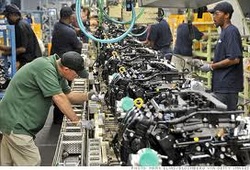 Playing the U.S. Manufacturing Boom
Playing the U.S. Manufacturing Boom
Jack Hough is a columnist at SmartMoney.com
Email: jack.hough@dowjones.com
Investors who have favored emerging markets like China in recent years should pay attention to another growing manufacturing center. It boasts plenty of skilled workers; cheap and abundant energy; stable institutions; and a large middle class that likes to shop.
It is the U.S., where a long industrial decline might be in reverse.
Manufacturing’s share of gross domestic product plunged to 11% in 2009 from 26% in 1947, according to the Commerce Department. In 2010, it rose to 11.7%—the biggest yearly gain in more than 50 years. The 2011 numbers will be released on April 26, and the anecdotal evidence is promising; companies like Caterpillar,CAT -2.17% Ford Motor F -2.00% and NCR say they are moving some operations back to the U.S.
Second, a weakening dollar makes U.S. goods more attractive to foreign buyers. The dollar has fallen by nearly one-third over the past decade against a basket of currencies including the euro, British pound and yen.
Third, energy production is booming in the U.S., and domestic natural-gas prices have recently plunged. That gives an edge to U.S. producers of fabricated steel, transportation equipment, machinery and chemicals, which use natural gas extensively, according to a recent report from Citigroup C -2.36% .
Of course, a sudden rise in the dollar or a spike in natural-gas prices or wages could slow U.S. manufacturing gains. But for now, at least, that scenario appears unlikely. Wall Street expects earnings for the S&P 500 industrial sector to rise 13% this year, versus 9% for the broader index.
There are several ways to invest in the U.S. manufacturing resurgence. An index fund that tracks the Standard & Poor’s 500-stock index has a 10.6% weighting for industrials. Investors should try to increase their allocations to about 16%, says Chuck Severson, a portfolio manager at Baird Investment Management.
Mr. Severson prefers U.S. companies that supply manufacturers, because they stand to gain from a broad rise in factory activity. His favorites include Danaher, a conglomerate with an industrial technology division; Roper Industries, whose pumps and valves are used in factories and refineries; and industrial suppliers W.W. Grainer and Fastenal.
BofA’s Mr. Dutta, meanwhile, favors U.S. companies whose goods and services are used to automate and monitor factories. Examples include Rockwell Automation and Emerson Electric.
U.S. Steel and Nucor are the largest U.S. steelmakers, and analysts say both can reduce their domestic production costs by switching from coal to natural gas where possible.
Jerry Swank, founder of Swank Capital, a Dallas investment firm specializing in energy, says U.S. chemical makers such as Dow Chemical and DuPont should profit from turning natural-gas liquids into materials used in fabrics, pipes, food packaging and other items.
Exchange-traded funds also offer easy exposure, notes Jeff Sica, president of Sica Wealth Management in Morristown, N.J. Vanguard Industrials and iShares Dow Jones U.S. Industrial Sector cost $19 and $47 a year per $10,000 invested, respectively, plus trading commissions. Both count General Electric as GE -1.49% their largest holding. The Guggenheim S&P 500 Equal Weight Industrials is more spread out among smaller companies. It costs $50 a year per $10,000 invested, plus trading commissions.
When it comes to U.S. manufacturing, says Kristina Hooper, head of portfolio strategies at Allianz Global Investors, “It’s time to stop looking in the rearview mirror and start looking ahead.”
Contact:e-mail:sro@businessinsider.com
Subscribe to his twitter feed
Meanwhile, economist Tyler Cowen is out with a similarly-themed essay on America’s great export boom. He also cites three big bullish factors: Domestic energy, huge demand from growing emerging markets, and artificial intelligence that are helping to solve big manufacturing problems.
Bottom line: This is definitely a hot line of thinking across financial and academic circles.
INQUIRIES
Media: PR Department
Partnership: Marketing
Information: Customer Service

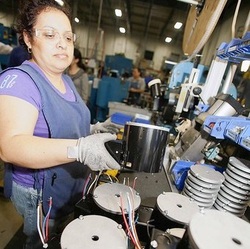

 Luzerne County (PA) Manufacturer to Expand, Create 80 New Jobs
Luzerne County (PA) Manufacturer to Expand, Create 80 New Jobs 
 The Return of ‘Made in America’
The Return of ‘Made in America’ 
